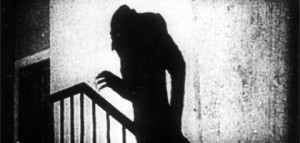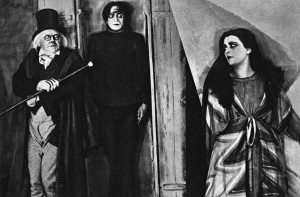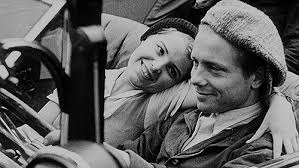When Atlanta rapper B.o.B. released his contemptible / ridiculous Neal deGrasse Tyson diss track “Flatline” earlier this week – in which he manages to tie together Flat Earth theories, Lizard People conspiracies, Holocaust denial, and a healthy dollop of “Protocol of the Elders of Zion”-inspired anti-Semitism into one shitty, shitty package – the internet erupted.
By turns horrified, bewildered, and amused at the stupidity on display, the collective voices of the world responded with the only appropriate retort: “What?”
Similarly, when B.o.B. rapped, “You better read your David Irving” – referring to the infamous British historian who maintained there was no Final Solution during WWII, and who once mentioned that, while he enjoyed seeing Black families at the airport together, he disliked it when non-white people read “his” news to him on television – the world glanced nervously around the kitchen table and replied quietly, “No. No, B.o.B, I don’t think I will do that.” And when he just went for it, declaring, “Stalin was way worse than Hitler / That’s why POTUS gotta wear the kippah,” there was a mad rush for the door, to get away from the weird, possibly disturbed guy and his terrible rhymes.
So now – with B.o.B.’s crackpot notions an unfortunate part of the discourse, and on the 71st anniversary of the liberation of Auschwitz, no less – it seems as good a time as any to recommend the Netflix documentary From Caligari To Hitler: German Cinema In The Age Of The Masses, a treasure trove of restored images from Weimar film. If its central theme – that cinema prefigures social changes to come even as it reflects current concerns – turns out to be so totalizing that it can’t possibly prove its case, the film is still a valuable insight into a neglected period, and it’s often revealing.
The film shares its title with a 1947 book by Siegfried Kracauer, a German exile trying to make sense of the cataclysmic horrors in his home country, to understand how the exuberance and hope of Weimar vanished almost as soon as the republic began, a brief explosion of art and culture that now can’t help but seem a footnote to the gas chambers. How could things go so deeply, genocidally wrong? Maybe, both book and film suggest, cinema holds the answer.
So From Caligari to Hitler becomes, to a degree, an archaeology of the image, a search for clues in the documents. The black-gloved hand on a city map in Fritz Lang’s M, and an almost identical shot in The Last Will of Dr. Mabuse, indicate the coming surveillance and total social control. In film after film, it’s pointed out, there are desires for central planning, a keen awareness (as in Lang’s story of a child murderer) that uncontrollable forces lurk among the people, and a general sense that these must be smothered by the mysterious and powerful counter-forces of the state. Sleepwalkers abound, as in Caligari, and so do an easily duped populace, another kind of sleepwalking, as in Metropolis. It becomes difficult to separate the justifiable power of governance from their doppelgangers in the criminal underworld. Bad things are afoot.
The film makes the case well, but there’s still a sense of trying too hard to impose a unifying vision on disparate elements, like the conclusion preceded the evidence, and so much is left out. (Jay Weissberg makes this argument compellingly in Variety.) There is curiously little talk of the ubiquitous anti-Semitic representations of the period (and not just in Germany). When I rewatched F.W. Murnau’s Nosferatu last year, I found them overwhelming – the shadowy figure from the East, from over the mountains, with his plague and rats and hook-nose and long fingernails and mansion, who lives on the blood of the innocent who he corrupts. You don’t have to dig too deep here to at least entertain the notion that something very specific is being invoked, and likely something audiences of the time would recognize without hesitation.

That this doesn’t emerge as a central theme is additionally odd, because I’d think it would help the filmmakers’ general case about how art – and cinema especially, with its visceral impact via the image – shapes life. From Caligari to Hitler more or less leaves this rock unturned, and I wish it didn’t.
It gets a lot else right, though. It is filled with extremely gorgeous examples of the kinds of art flourishing at the time, and a series of talking head interviews help illuminate the period’s influence on future filmmakers and others. Anyone into German culture or film history will find much to admire.
The film’s greatest strength, though, is also its weakness – the totalizing theory of art at its center. It doesn’t cohere in the end, at least in my view, because it is way too convinced of its own obvious truth, but the idea that film both reflects current thought and paves the way for things to come is worth considering.
B.o.B. is not a Murnau or a Lang, and this is not the Weimar Republic, but the fact remains that no art exists in a vacuum. Ideas have cultural valency, and representations impact the way we view the world. That’s one reason art matters – it shapes the world we’ll come to live in.
I confess also my personal investment here, since the person I love is Jewish, as are members of my family, as are many of my friends and almost literally everybody I grew up with. The temptation to laugh at some dude from Atlanta’s bullshit is strong, but as From Caligari To Hitler reminds us, it’s vitally important to pay attention to the words and images our cultures create. That’s a matter of ethics and justice and basic decency, but also a matter of survival. Future generations will read us as we read those who came before. Here’s hoping we do better than they did.




